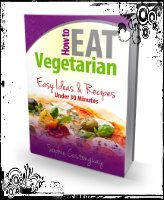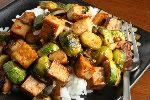And participants are encouraged to eat fresh vegetables rather than imitation meat. But before you eat any type of fruit or vegetable, make sure they are actually healthy for you, too.
It is widely believed that eating raw vegetables is best for good health. Well ... not always. Most fresh vegetables can be eaten raw or cooked. However, each one offers different nutritional value when served raw or cooked, while some vegetables must be thoroughly cooked before consumption or else they are poisonous and will cause harm to your body.
Tuberous vegetables should never be eaten raw, warns Chanida Pachotikarn of Mahidol University's Institute of Nutrition. Cassava can be deadly poisonous if eaten raw because it still contains toxic compounds like cyanogenic glucosides.
Only cooked tuberous crops, such as potato, taro and wild yam can be digested by the human body and therefore, eating them raw could result in flatulence. Nuts and fruits are also included in this category. Chanida also points out that cooking times and methods used have a lot to do with the nutritional value left in the vegetables. Steaming vegetables is known to be the best cooking method for maximum nutritional benefit.
In general, the longer the period of heating, the less nutrients are preserved. Once harvested, produce will gradually begin to lose its vitamin C content and is quickly disappears as heat is introduced. But heat doesn't always remove all the nutrients.
Some vegetables, like carrots, onions and garlic, offer different nutritional substances when they are cooked. Raw carrots contain enzymes, such as polyphenol oxidase, but cooked carrots offer high levels of antioxidants like beta-carotene. Fresh tomatoes are rich in vitamin C while cooked tomatoes offer lycopene.
Spinach is best in terms of nutritional value when boiled for one minute. But to maximise the nutrients in cabbage and Chinese kale (or Chinese broccoli), these vegetables have to be cooked for five minutes. Any vegetables cooked longer than 10 minutes will lose most of the nutrients.
Popular Chinese dishes, such as braised bitter gourd and braised mixed vegetables, will have few vitamins left after long hours of cooking. However, they still offer lots of fibre and are convenient for the elderly who can no longer properly chew.
Apart from the cooking methods, there are some vegetables that people with particular diseases should avoid. It's commonly known that purine-rich vegetables should never be included in a gout diet.
Purines are broken down into uric acid by the body's digestive system, which means people suffering from gout should avoid eating bamboo shoots, asparagus, mushrooms, seaweed, string beans and some species of acacia like kratin (wattle) and cha-om (acacia pinnata).
Gaba rice, which is generally believed to be a healthy addition to the diet, should also be left out of a gout diet. People with diabetes should avoid starchy, tuberous crops, as well as fruits high in carbohydrates and sugars, which include potatoes, sweet potatoes, taro, kee lek (Siamese cassia leaves), look niang (Pithecellobium lobatum Benth).
Those with diabetes are suggested to eat more makhuea phuang (pea eggplant), bitter gourd, lettuce and Chinese cabbage. The suggested portion for a meal, to go with the main dishes in a diabetes diet, is either: five to eight pieces of small size fruit, such as longans, longons and grapes; one or two medium size fruit, such as oranges, roseapples and bananas; and one-half of a large size fruit, such as a mango and guava. And no more than eight bite-sized pieces of large size fruit like papaya, pineapple or watermelon are allowed for each portion.
Look niang is not recommended for people with kidney disease, due to its large amounts of amino acid, while patients with chronic kidney disease are highly recommended not to eat bananas and dried fruit, including prunes, raisins and dates, which are high in potassium. In addition, vegetables that are bright and colourful, such as pumpkins, are not recommended.
People with high blood pressure should eat dark coloured vegetables because they are usually rich in potassium, which helps rid the body of sodium and protects cells that line the blood-vessel walls. That's why raw, dark-coloured vegetables are always found in salty dishes like nam prik kapi (fermented shrimp paste).
According to Chanida, patients undergoing chemotherapy _ a practice that normally leaves them physically vulnerable _ should eat cooked vegetables only, as raw vegetables can be contaminated with chemicals and non-chemical residue if they are not thoroughly washed. Uncooked vegetables can also be difficult to digest.
To ensure the vegetables are residue-free, there are a few suggested ways to clean them. The most conventional way that always works is using potassium permanganate. But since this chemical has become a rare item in most modern houses nowadays, something from your kitchen, like vinegar or salt, can also be a good option.
A tablespoon of vinegar mixed with four litres of water can greatly reduce the chemical residues in vegetables by up to 30-40%. Soaking vegetables in four litres of water with two tablespoons of salt for 10 minutes also works well. However, salt is not recommended for patients with high blood pressure as the vegetables will absorb most of the salt from the water during the soaking.
But to get the best nutritional value out of vegetables, people with normal health are suggested to eat about 300g of vegetables from the five colour families.
The five colour groups of vegetables are: white (garlic and onion); blue and purple (aubergine); orange and yellow (carrot); green (general vegetables); and red (tomato). For daily intake, three out of five portions should be light coloured vegetables and the rest dark coloured, including red ones.













No comments:
Post a Comment